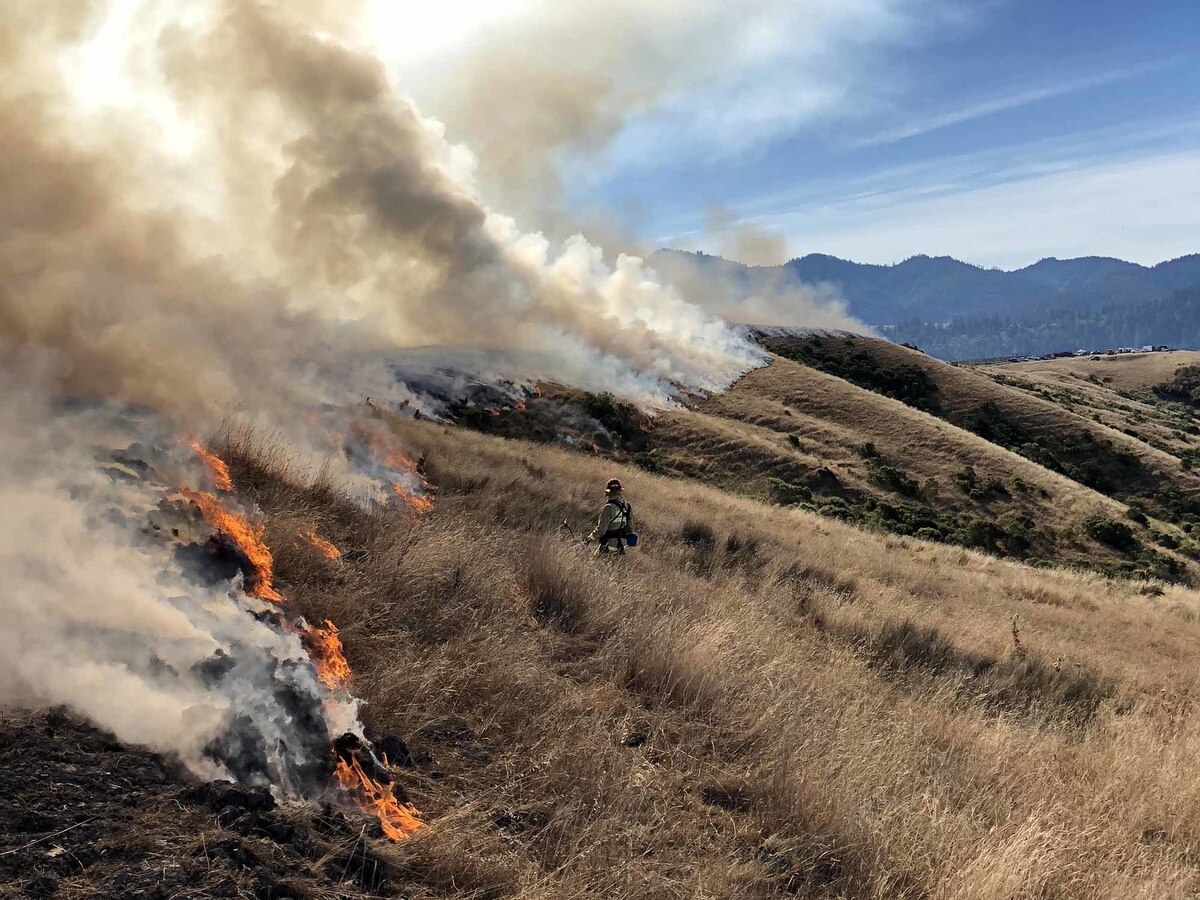To Stop Extreme Wildfires, California Is Learning From … Florida?

Enlarge this image
Prescribed burns, like this one in Humboldt County, Calif., reduce the underbrush without destroying trees.
Lenya Quinn-Davidson
hide caption
toggle caption
Lenya Quinn-Davidson

Enlarge this image
Just like many Western forests, longleaf pine woodlands in the Southeast are adapted to regular fires, like this one in Georgia.
Morgan Varner
hide caption
toggle caption
Morgan Varner

Environment
With Extreme Fires Burning, Forest Service Stops ‘Good Fires’ Too

Environment And Energy Collaborative
Wildfire Risk Is Growing Everywhere, Even As More Americans Move Into Harm’s Way
In total, 11 Southern states have burn manager certification programs. As a result, controlled burning has become part of the social fabric.
«The city embraces the natural areas that surround it,» says Morgan Varner, director of fire research at Tall Timbers, a research station and land conservancy in Tallahassee, Florida. «They love the green space and they associate that with the burning that takes place. So there’s a bit of a social license that has to be reborn or restored in the rest of the country that’s really not present.»
Varner says many private landowners burn every other year, usually in the spring. As long as the weather and wind conditions are safe, burn bosses can get a required permit in 15 minutes over the phone. In Western states, prescribed burn planning can take weeks or even months in some places.
«People don’t just accept it there — they look for it,» says Crystal Kolden, a fire scientist at the University of California Merced. «They demand it, because they know how important it is for maintaining those landscapes.»
Western states have a long way to go
Florida has done prescribed burns on more than 1.6 million acres so far this year. California has only burned around 35,000 acres. The state is 2.5 times larger than Florida.
California recently signed an agreement with the U.S. Forest Service to reduce vegetation on 1 million acres of public lands, but the goal is still out of reach. Experts estimate that tens of millions of acres need addressing statewide, but lack of funding, personnel and political will has limited the work on public lands.

Enlarge this image
A number of prescribed burn associations have formed in California recently to help landowners, a model the state borrowed from Nebraska.
Lenya Quinn-Davidson
hide caption
toggle caption
Lenya Quinn-Davidson
A number of prescribed burn associations have formed in California recently to help landowners, a model the state borrowed from Nebraska.
Lenya Quinn-Davidson
About half of California is privately-owned, but landowners have had little support from public agencies to conduct burns on their property. Permits from fire fighting agencies and air quality regulators can be cumbersome to secure.
«It’s very important that we have private landowners and community groups involved because they are managing and taking care of the lands around our towns and communities,» Quinn-Davidson says. «They’re critical in this larger vision of California living with fire.»
While federal and state firefighters are protected from liability claims for prescribing burning, most burn bosses on private land are unable to get insurance to protect themselves.
«When I go out and I burn, I have no liability protection,» Quinn-Davidson says. «I’m assuming full responsibility for those projects. And most of the time, we’re doing those projects for public benefit, to reduce wildfire risk, to restore habitat, for cultural reasons.»
California legislators are currently considering a bill that would protect burners from being charged for the firefighting resources that would be needed if a burn escapes.
An earlier version of the bill would have copied laws from Southeastern states, protecting burners from civil liability, too, unless they were grossly negligent. After opposition from the insurance industry, that provision was removed. While rare, some prescribed burns have escaped and burned into developed areas, threatening or even destroying homes.
Other Western states are beginning to move in the same direction. In March, New Mexico passed a law limiting liability for prescribed burning and establishing a burn boss training program. Oregon passed a bill in July that also establishes its first burn boss certification, as well as a bill that directs agencies to study issues around liability.
At the federal level, several Democratic senators are hoping to help states with added funding from the National Prescribed Fire Act of 2021, which would provide $300 million for federal agency burns, if passed.
While Western states have a long way to go, some experts say the resurgence of burning has already begun, led by communities and Native American tribes.
In May, Quinn-Davidson helped lead the first burn manager certification course in California. Fourteen local groups, known as prescribed burn associations, recently formed to help private landowners with burns around the state.
«California is, in some ways, in the dark ages with prescribed fire,» Varner says. «But they’re in a time now, a special time, that they can go from number 49 in the country to number 1.»
- prescribed burn
- California wildfires
- climate change













Комментарии 0